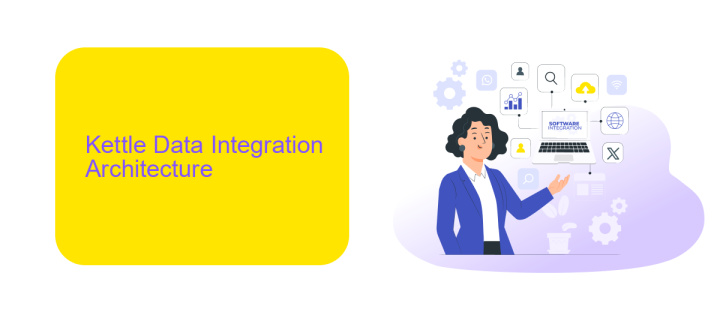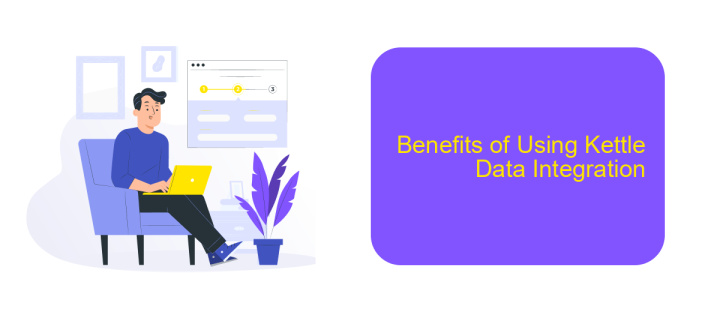Kettle Data Integration
Kettle Data Integration, commonly known as Pentaho Data Integration (PDI), is a powerful, open-source platform designed for data integration and transformation. It enables organizations to efficiently extract, transform, and load (ETL) data from diverse sources into a unified format. With its user-friendly interface and robust capabilities, Kettle streamlines data workflows, empowering businesses to make informed decisions based on accurate and comprehensive data insights.
Introduction to Kettle Data Integration
Kettle Data Integration, also known as Pentaho Data Integration (PDI), is a powerful open-source tool designed for data extraction, transformation, and loading (ETL) processes. It enables users to manage and manipulate data from various sources, making it an essential tool for data warehousing and business intelligence.
- Easy-to-use graphical interface
- Support for a wide range of data sources
- Scalability for large datasets
- Integration with other Pentaho tools
One of the key advantages of Kettle Data Integration is its flexibility. Users can create complex data workflows with minimal coding, thanks to its intuitive drag-and-drop interface. For those looking to automate and streamline their data integration processes, services like ApiX-Drive can be highly beneficial. ApiX-Drive offers seamless integration capabilities, allowing users to connect various applications and data sources effortlessly. This makes it easier to manage data flows and ensures that your data is always up-to-date and accurate.
Kettle Data Integration Architecture

Kettle Data Integration, also known as Pentaho Data Integration (PDI), is an ETL (Extract, Transform, Load) tool that facilitates the integration of various data sources into a unified data warehouse. Its architecture is designed to be highly scalable and flexible, accommodating a wide range of data types and formats. The core components of Kettle include the Spoon graphical interface, which allows users to design and test data transformations, and the Pan and Kitchen utilities, which execute these transformations in batch and scheduled modes, respectively. The Carte web server is another crucial component, enabling remote execution and monitoring of data integration jobs.
The architecture of Kettle is modular, allowing for seamless integration with third-party services and tools such as ApiX-Drive. ApiX-Drive can be particularly useful for setting up and managing integrations with various APIs, automating data flows between different systems. This enhances the overall efficiency and reduces the complexity of data integration processes. By leveraging Kettle's robust architecture along with ApiX-Drive's capabilities, organizations can achieve a more streamlined and automated data integration workflow.
Key Features of Kettle Data Integration

Kettle Data Integration is a powerful tool designed to simplify the process of data transformation and integration across various platforms. It offers a user-friendly interface and a robust set of features that cater to both novice and experienced users.
- Intuitive Interface: Kettle provides a drag-and-drop interface, making it easy to design complex data transformations without writing code.
- Extensive Connectivity: The tool supports a wide range of data sources, including databases, cloud services, and flat files, ensuring seamless integration.
- Scalability: Kettle can handle large volumes of data, making it suitable for both small and enterprise-level applications.
- Real-Time Data Processing: With real-time capabilities, Kettle allows for immediate data transformation and integration, ensuring up-to-date information.
- API Integration: Kettle supports integration with external APIs, such as ApiX-Drive, to automate data workflows and enhance productivity.
By leveraging these key features, Kettle Data Integration streamlines the data management process, enabling organizations to make data-driven decisions efficiently. Whether you are integrating data from multiple sources or transforming datasets for analysis, Kettle provides the tools needed to achieve your goals effectively.
Benefits of Using Kettle Data Integration

Kettle Data Integration, also known as Pentaho Data Integration (PDI), offers a robust and flexible solution for data transformation and integration. It allows organizations to streamline their data processes, ensuring that data is consistent, accurate, and readily available for decision-making.
One of the key benefits of using Kettle Data Integration is its user-friendly interface, which simplifies the process of creating, managing, and monitoring data workflows. This ease of use significantly reduces the time and effort required to integrate various data sources.
- Comprehensive ETL capabilities
- Scalability to handle large volumes of data
- Support for a wide range of data sources and formats
- Strong community support and extensive documentation
- Seamless integration with other tools and platforms
Additionally, integrating Kettle Data Integration with services like ApiX-Drive can further enhance its capabilities. ApiX-Drive offers automated workflows and integrations, making it easier to connect Kettle with various applications and services, thereby optimizing data management and operational efficiency.
- Automate the work of an online store or landing
- Empower through integration
- Don't spend money on programmers and integrators
- Save time by automating routine tasks
Best Practices for Kettle Data Integration
When working with Kettle Data Integration, it is crucial to ensure that your transformations and jobs are well-organized and documented. Begin by clearly defining the data sources and destinations, and make use of meaningful naming conventions for steps and variables. This will help in maintaining clarity and ease of troubleshooting. Additionally, leverage the use of metadata injection to dynamically adjust your ETL processes, making them more adaptable to changes in data structures.
To enhance the efficiency of your integration processes, consider using external services such as ApiX-Drive. ApiX-Drive can simplify the setup of integrations by providing pre-built connectors and a user-friendly interface for managing data flows between various applications. This can significantly reduce the time and effort required for manual configurations, allowing you to focus on optimizing and scaling your data integration tasks. Regularly monitor and test your integrations to ensure data accuracy and consistency, and always have a rollback plan in place to handle any potential issues.
FAQ
What is Kettle Data Integration?
How do I connect Kettle to different data sources?
Can Kettle handle real-time data integration?
How can I automate Kettle data integration processes?
Is Kettle Data Integration suitable for large-scale data processing?
Strive to take your business to the next level, achieve your goals faster and more efficiently? Apix-Drive is your reliable assistant for these tasks. An online service and application connector will help you automate key business processes and get rid of the routine. You and your employees will free up time for important core tasks. Try Apix-Drive features for free to see the effectiveness of the online connector for yourself.


